

Home
About Us
Allotments
Garden Equipment
Seed Suppliers
Manure Problems
Children's Pages
GLA Blog
Weather Blog
School Veg Patch
Useful Links
Garden Spider
On a frosty or dewy morning our gardens are often decorated by lacy spiders’ webs. These webs are the work of garden spiders. As the name suggests these are commonly found in gardens as well as parks and woodland areas.
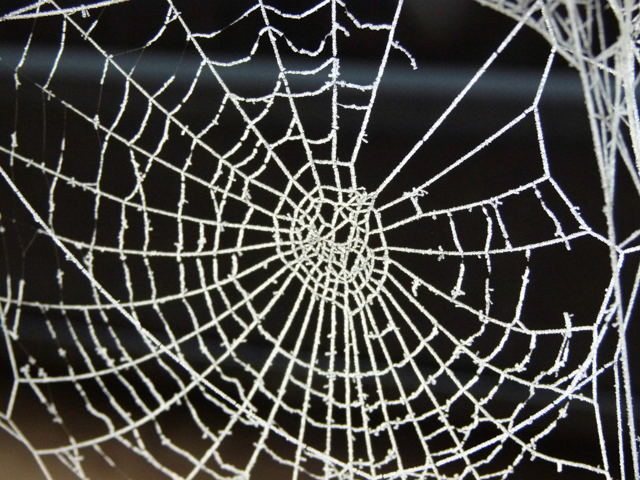
Garden spiders belong to a group known as orb spiders. They vary in colour from light yellow to very dark grey, but all European garden spiders have five or more large white dots on their abdomen that are arranged to form a cross.
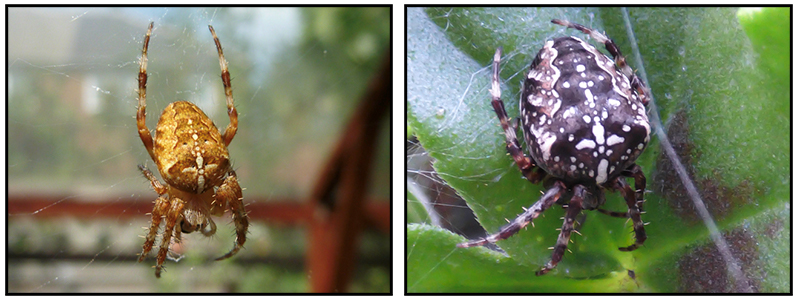
All spiders have eight legs but not all eight legged minibeasts are spiders! The body of a spider is in two parts unlike harvestmen that also have eight legs but have only one part to their bodies. As well as having eight legs garden spiders have eight eyes.
In comparison to many spiders garden spiders legs are relatively short and are hairy. They are attached to the front section of the spider’s body just behind the mouth parts and palps. The palps look like very short legs and are used for holding prey. Each foot has three claws which are used in the construction of the web.
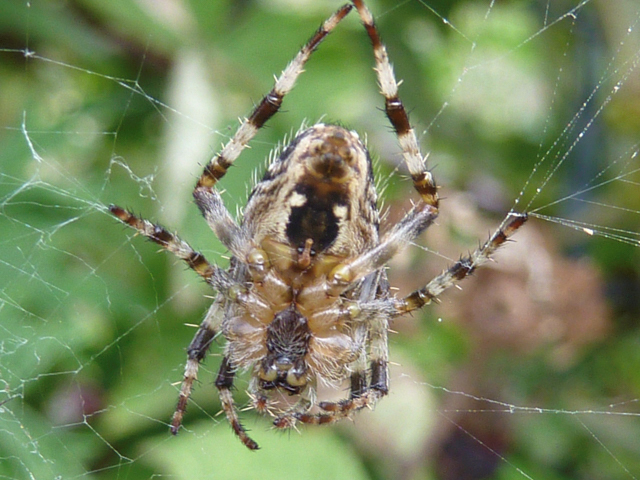
The spider produces silk from spinnerets or silk glands at the tip of the abdomen. These contains tiny holes through which the silk is squeezed in liquid form. When the liquid is exposed to the air it solidifies. The garden spider has six spinnerets. Four of them produce different types of silk and the two others produce the ‘glue’ which is spread on some parts of the web to trap the spider’s prey. Different types of silk are used for different purposes. One type is used to form the outer rim and spokes of the web, a second type of sticky silk is used to create the spiraling line which capture the prey, another type is used to wrap the prey and another is used to create egg cases.
Spider silk is extremely strong; each thread is about 0.02mm in diameter and has the relative strength of a strand of steel of the same size.
There are lots of theories about why spiders don’t become trapped by their own webs. One theory is that spiders oil their feet and another is that they only walk on the non-sticky parts of the web. Another is a more complex explanation regarding the structure of their feet but none of the theories have provided a conclusive answer.
Once the web is built the spider will either sit on the edge of the web with a ‘fishing line’ attached to one of its feet or it will sit in the non-sticky centre of the web. If the web vibrates the spider will rush out to check whether prey has been trapped. There are then two different techniques for dealing with the prey item.
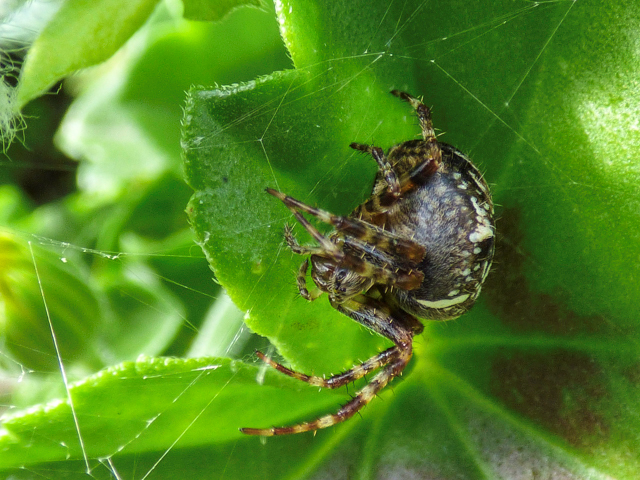
The spider may bind the prey with silk before delivering a venomous bite or it will bite the prey item to paralyse it to immobilise it before encasing in silk. Once encased in silk the prey is left attached to the web until the spider decides to consume it.
The spider can’t eat its prey whole. It first has to inject digestive juices into the body of entrapped creature and then suck out the dissolved insides leaving undigested parts wrapped in silk.
The web is very important to the garden spider and so it is rebuilt each day or whenever it is damaged. Before rebuilding the spider will consume the silk and recycle the material in their body.
During mating the smaller male spider may be mistaken for a prey item. To avoid this fate he will approach his intended mate cautiously plucking the strands of the web in a silent serenade. However careful he is the male spider does sometimes get it wrong and end up as a meal rather than a suitor. Even if the male manages to mate with the female he will often end up as a meal for his mate afterwards.
After a successful mating the female will find a crevice or place under a windowsill to spin a silk egg sac in which to lay her eggs. She will then sit and guard her eggs until autumn when although garden spiders have a life-span of one to two years she is likely to die.
The young spiders or spiderlings will hatch in May the following year. They will then find a suitable perch and then produce strands of silk which will be caught by the wind and act as gliders to carry the spiderlings on the breeze to a suitable new home.
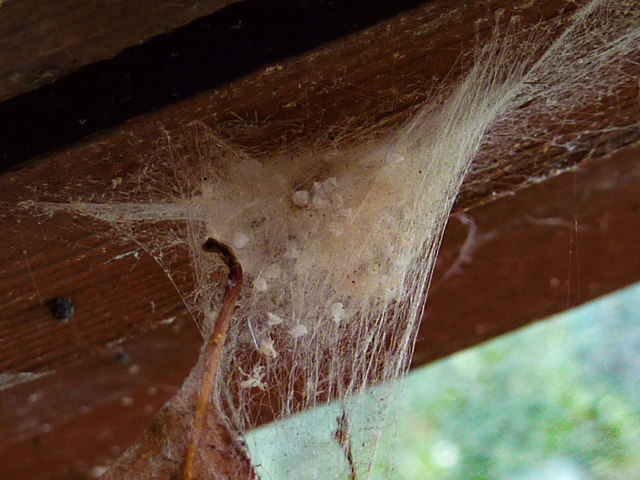
This action is called ballooning and ensures that the young spiders don’t set up home too close together.
The harden spider isn't the only spider that we have found in out garden. The two tiny spiders pictured below are two more species.
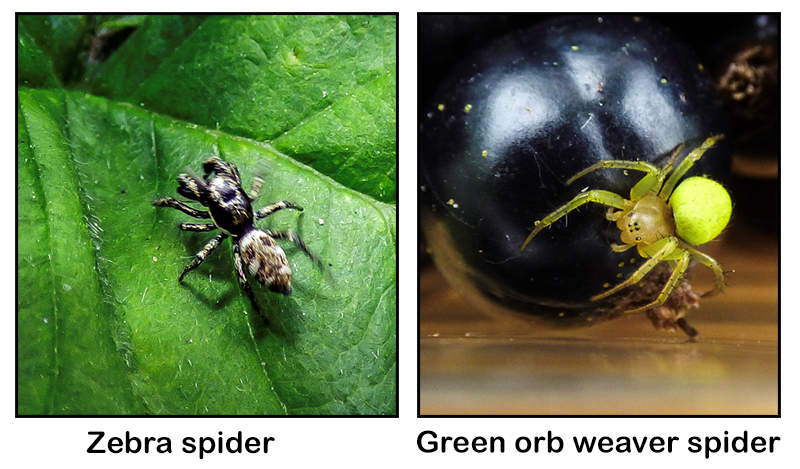
I have written more about the green ord weaver spider on my blog here
Our Plot at Green Lane Allotments Blog | A Gardener's Weather Diary | School Vegetable Patch Website
© Our Plot on Green Lane Allotments - Please email me if you wish to use any of this site's content